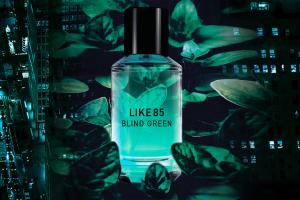Dr. Navin Arora is sharing his knowledge and recommendations for healthy skincare practices while vacationing in warm and cold climates.
— Dr. Navin Arora
GARDEN CITY, NEW YORK, UNITED STATES, February 7, 2024 /EINPresswire.com/ — During the winter months, many people seek to escape the cold weather and head south to Florida, the Caribbean and other warm destinations, while others prefer to go north to ski, snowboard and enjoy winters sports in the mountains. Shifting between warm and cold climates can have adverse effects on the skin. Long Island based Board-Certified Dermatologist Dr. Navin Arora and founder of Borealis Dermatology with offices in Garden City and Syosset, NY is sharing his knowledge and recommendations for healthy skincare practices while vacationing in warm and cold climates.
During his 12 years serving as an U.S. Army physician, Dr. Arora has extensive experience treating patients of all races in different regions and climates around the world. His experience gives him a different perspective on how weather and other conditions have an effect on the skin. The following are some of his tips for safe skin protection:
Protecting Skin from the Sun When Visiting Warmer Climates
In southern vacation spots, the sun and UV rays are much stronger all year. Those who have not been out in the sun for months need to be prepared. Failure to do so can result in extreme sunburn. Relaxing vacations sitting on the beach or on a cruise ship deck increases sun exposure time. Be aware of this and keep exposure to a minimum. When unprepared there is the potential for severe sunburn, blistering and in the long run, the chances of getting melanoma (skin cancer) later in life. To prevent sunburn, it is imperative to wear sunscreen with 50 SPF and UVA or UVB protection. This sunscreen should be reapplied to exposed skin, including the face, every 2-3 hours. It is important to know the type of protection that is being applied and how much to use. Wearing the proper clothes such as long sleeves, sundresses, sunglasses, wide brim hats and umbrellas also adds to skin protection.
Exfoliate The Skin Before Going to the Beach
It is helpful to exfoliate the skin prior to being exposed to harmful UV rays and sand. Exfoliating the skin will remove dead skin cells and allow the skin to absorb moisturizers and sunscreens more effectively. Exfoliating will also give the skin a smoother and brighter complexion. Dermatologist recommended exfoliants include CeraVe and La Roche-Posay.
Moisturizing The Skin Before and After the Beach
Excess exposure to the sun, salt water, pool chemicals and rough sand particles can have damaging effects on the skin. Be sure to moisturize both before and after the beach to keep the skin hydrated. In warm weather, it is best to use lightweight and fast absorbing ointments such as Paula’s Choice and The Ordinary. Aloe and skin moisturizer can also be applied to sooth and rehydrate the skin that is damaged by sun exposure and to treat mild sunburn.
Safe Skin Practices During Ski Season
Winter is the time where many people travel up north to ski and snowboard. While in high altitudes and cold temperatures, the skin is at risk for frostbite, wind and sunburn. In some areas, snow can reflect up to 80 percent of the sun’s UV rays. The World Health Organization (WHO) states that with every increase in altitude of 3,000 ft, UV rays are strengthened by 10 – 12 percent. The sun still has adverse effects on skin, even in cold weather. It is essential to apply sunscreen periodically throughout the day, especially on the face, ears and areas that are exposed to sunlight. The extreme cold temperatures can also lead to dry, flaky, cracked, itchy and irritated skin. Before applying sunscreen, people should apply hydrating lotions, creams and moisturizers to keep their skin hydrated.
Skiers should also wear the proper clothing to protect their skin from windburn, sunburn and frostbite. Frostbite occurs in freezing temperatures and worsens the longer skin is exposed. Frostbite is caused when fluids in the skin begin to freeze, causing redness of the skin. As it worsens, the skin will feel warm but cold to the touch. The skin will appear waxy and feel numb; at its worst, skin will turn black due to dead skin tissue.
If these symptoms persist, immediately get inside to a warm room and change out of any cold or wet clothing. Then, gradually rewarm the skin with warm water. Be sure to avoid rubbing the skin and using heated pads as this will only further irritate the skin. If conditions worsen or do not improve, seek medical attention immediately.
To be protected from frostbite, be sure to wear warm layered clothing that covers all areas of the body that are most susceptible to frostbite including fingers, toes, nose and ears. These clothes include ski pants, warm socks, a ski jacket, gloves, hat, goggles and a face mask. All protective and cold weather clothing should also be waterproof.
Limit hot baths and showers
Many ski resorts offer exquisite hot baths for skiers after a long day on the slopes. It is best to avoid extensive exposure to hot water after being in the cold. The heat can lead to irritation, causing the skin to turn red. Excessive heat mixed with soaps that contain harsh chemical ingredients can aggravate dry or sensitive skin. It is best to use cool or lukewarm water to gently rinse off at the end of a hot shower. Pat the skin dry instead of rubbing with a towel, as this can irritate the skin as well.
After showering, it is recommended to apply cream or moisturizer to keep the skin hydrated and healthy. Use thicker creams and moisturizers as they are better for protecting the skin from cold weather.
For questions regarding skin care, please contact Borealis Dermatology to schedule an appointment with Dr. Arora and his team. Borealis Dermatology offers two convenient locations to provide various treatments for patients in the Queens and Long Island areas. Contact Dr. Navin Arora at (516) 246-8800 or visit https://borealisderm.com/ to schedule an appointment.
Bill Corbett Jr.
Corbett Public Relations
+1 516-428-9327
email us here
Visit us on social media:
Facebook
Twitter
Instagram
YouTube
![]()
Originally published at https://www.einpresswire.com/article/686577064/vacation-skin-care-tips-for-warm-and-cold-climates-from-long-island-dermatologist-dr-navin-arora





